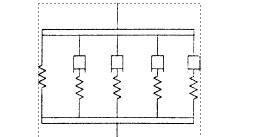1 TNO Building and Construction Research PO Box 49, NL-2600 AA Delft
2 Eindhoven University of Technology PO Box 513, NL-5600 MB Eindhoven
ABSTRACT
In the Netherlands thin layer mortars are usually applied in calcium silicate blockwork, but there is a tendency to use thin layer mortars also for concrete and clay brickwork. The paper describes an experimental research into the influence of the type mortar (thin layer and general purpose) on creep and shrinkage of masonry. Concrete, clay brick and calcium silicate units were used. The ratio between joint thickness and unit height was also a parameter for calcium silicate masonry. Detailed measurements, carried out for a period of 300 days, were performed perpendicular and parallel to the bed joint. Furthermore the mass of the shrinkage specimens was recorded.
The experiments strongly indicate that shrinkage mainly depends on the unit-type, where creep is also influenced by the joint type. Strange enough, the tests on calcium silicate masonry showed that the type of mortar joint was more important than the ratio between joint thickness and unit height.
KEYWORDS: General Purpose mortar, Thin layer mortar, Clay brick, Concrete brick, Calcium silicate unit, Shrinkage, Creep
9458.pdf



